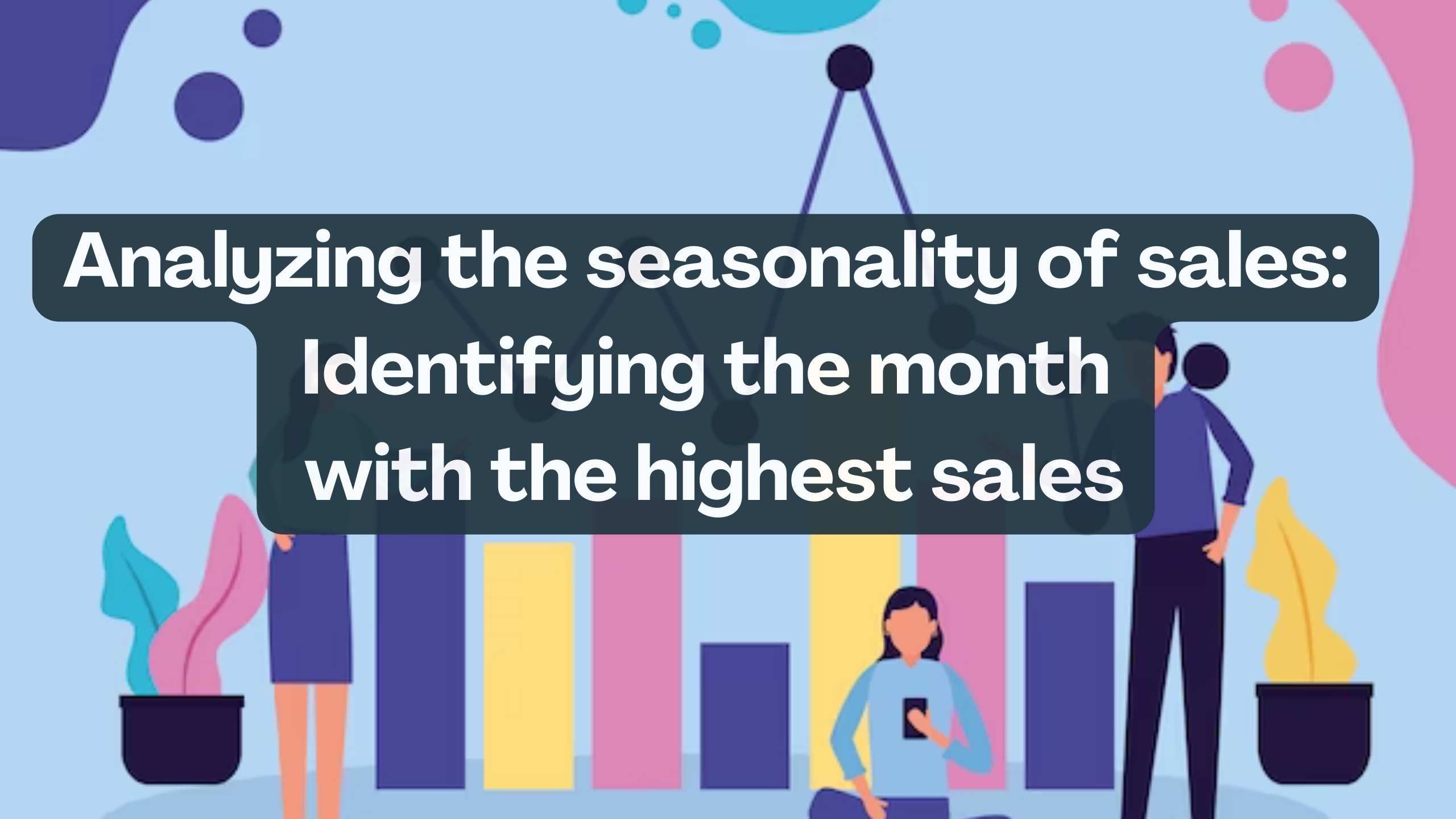Analyzing the seasonality of sales: Identifying the month with the highest sales
- Expense Management Software Credit Cards Investing Business Solutions


Analyzing the Seasonality of Sales: Unraveling the Complexities
Understanding the intricacies of sales seasonality is a vital aspect of strategic business planning. The ebb and flow of consumer demand throughout the year can significantly impact a company’s revenue and overall success. In this comprehensive exploration, we’ll delve into the multifaceted nature of sales seasonality, identify the key factors influencing these patterns, and discuss how businesses can leverage advanced analytics and SaaS solutions to decipher the month with the highest sales.
Decoding Sales Seasonality: A Nuanced Perspective
Sales seasonality is not a one-size-fits-all concept; its manifestation varies across industries, geographical locations, and even individual businesses. The dynamics of consumer behavior are shaped by a myriad of factors, requiring businesses to adopt a nuanced approach when analyzing sales patterns.
The Role of Holidays and Festive Seasons
One of the primary drivers of sales seasonality is the occurrence of holidays and festive seasons. These periods often witness a surge in consumer spending as people engage in gift-giving, festive preparations, and celebratory purchases. However, the impact of holidays can vary based on cultural and regional differences.
For example, the holiday season in Western countries, characterized by Christmas and New Year, tends to drive a substantial increase in retail sales. On the other hand, regions with different cultural festivities may experience peak sales during alternative times of the year.
Weather Conditions as a Sales Catalyst
Another significant factor influencing sales seasonality is weather conditions. Businesses dealing with seasonal products, such as apparel, outdoor equipment, or home decor, are particularly sensitive to weather patterns. The demand for winter coats, summer swimwear, or garden furniture, for instance, is intricately linked to seasonal changes.
By analyzing historical sales data in conjunction with weather patterns, businesses can gain valuable insights into the correlation between meteorological conditions and consumer purchasing behavior. This understanding enables them to optimize inventory levels and tailor marketing efforts based on anticipated weather-related demand.
Economic Factors: Navigating the Business Landscape
The broader economic landscape plays a pivotal role in shaping consumer sentiment and, consequently, sales seasonality. Economic factors such as employment rates, disposable income, and overall consumer confidence directly impact purchasing behavior.
During periods of economic prosperity, consumers are more likely to engage in discretionary spending, contributing to increased sales. Conversely, economic downturns may prompt individuals to adopt a more cautious approach, affecting the timing and volume of their purchases.
Data-Driven Insights: Unveiling Sales Patterns
To navigate the complexities of sales seasonality, businesses are increasingly turning to advanced analytics tools that offer data-driven insights. These tools enable organizations to analyze vast datasets, identify patterns, and make informed decisions regarding inventory management, marketing strategies, and resource allocation.
Google Analytics: Navigating the Digital Landscape
Google Analytics stands out as a powerful tool for tracking online user behavior. By examining website traffic, user engagement metrics, and conversion rates, businesses can gain a comprehensive understanding of customer interactions in the digital realm.
Google Analytics not only provides insights into the volume of online sales but also allows businesses to correlate digital trends with external factors like holidays, events, or economic shifts. This holistic view enhances the accuracy of sales predictions and empowers companies to refine their digital marketing strategies.
Tableau: Crafting Visual Narratives from Data
Tableau emerges as a robust data visualization tool, empowering businesses to create compelling visual narratives from complex datasets. In the context of sales seasonality, Tableau enables organizations to explore historical sales data visually, uncovering trends, outliers, and correlations that might go unnoticed in traditional spreadsheets.
The intuitive interface of Tableau facilitates interactive dashboards that provide a dynamic representation of sales patterns. This visual storytelling not only aids in internal decision-making but also serves as a powerful communication tool for stakeholders seeking a comprehensive overview of sales seasonality.
Salesforce Sales Cloud: Elevating CRM Capabilities
For businesses looking to integrate sales data into their broader Customer Relationship Management (CRM) strategy, Salesforce Sales Cloud proves to be a game-changer. Salesforce Sales Cloud is a comprehensive CRM solution that allows businesses to manage sales pipelines, track customer interactions, and forecast sales projections.
By leveraging predictive analytics and AI-driven insights, Sales Cloud provides a holistic view of sales patterns. This integrated approach enables businesses to align sales strategies with customer expectations, thereby optimizing the overall sales process.
Unveiling the Month with the Highest Sales: A Strategic Endeavor
Identifying the month with the highest sales involves a strategic blend of historical data analysis, predictive modeling, and a deep understanding of the various factors influencing consumer behavior. Businesses must adopt a proactive approach, continually refining their sales strategies based on evolving market dynamics.
Conclusion: Navigating the Sales Landscape with Precision
In conclusion, analyzing the seasonality of sales demands a holistic and nuanced approach. By considering the interplay of holidays, weather conditions, economic factors, and leveraging advanced analytics tools, businesses can unravel the complexities of sales seasonality. The identification of the month with the highest sales becomes a strategic endeavor, offering companies the opportunity to optimize their operations and maximize revenue.
In the realm of SaaS subscriptions, Subscribed.FYI emerges as a comprehensive platform designed to empower businesses in navigating the complex landscape of software tools. Understanding the significance of sales seasonality is inherently linked to optimizing the SaaS stack, and Subscribed.FYI serves as a gateway to achieving this goal. Subscribed.FYI stands as a steadfast companion on this journey, providing businesses with the tools and insights needed to navigate the intricate landscape of SaaS subscriptions. By unlocking exclusive deals and centralizing subscription management, Subscribed.FYI empowers businesses to stay ahead in the competitive realm of sales analysis and optimization.





